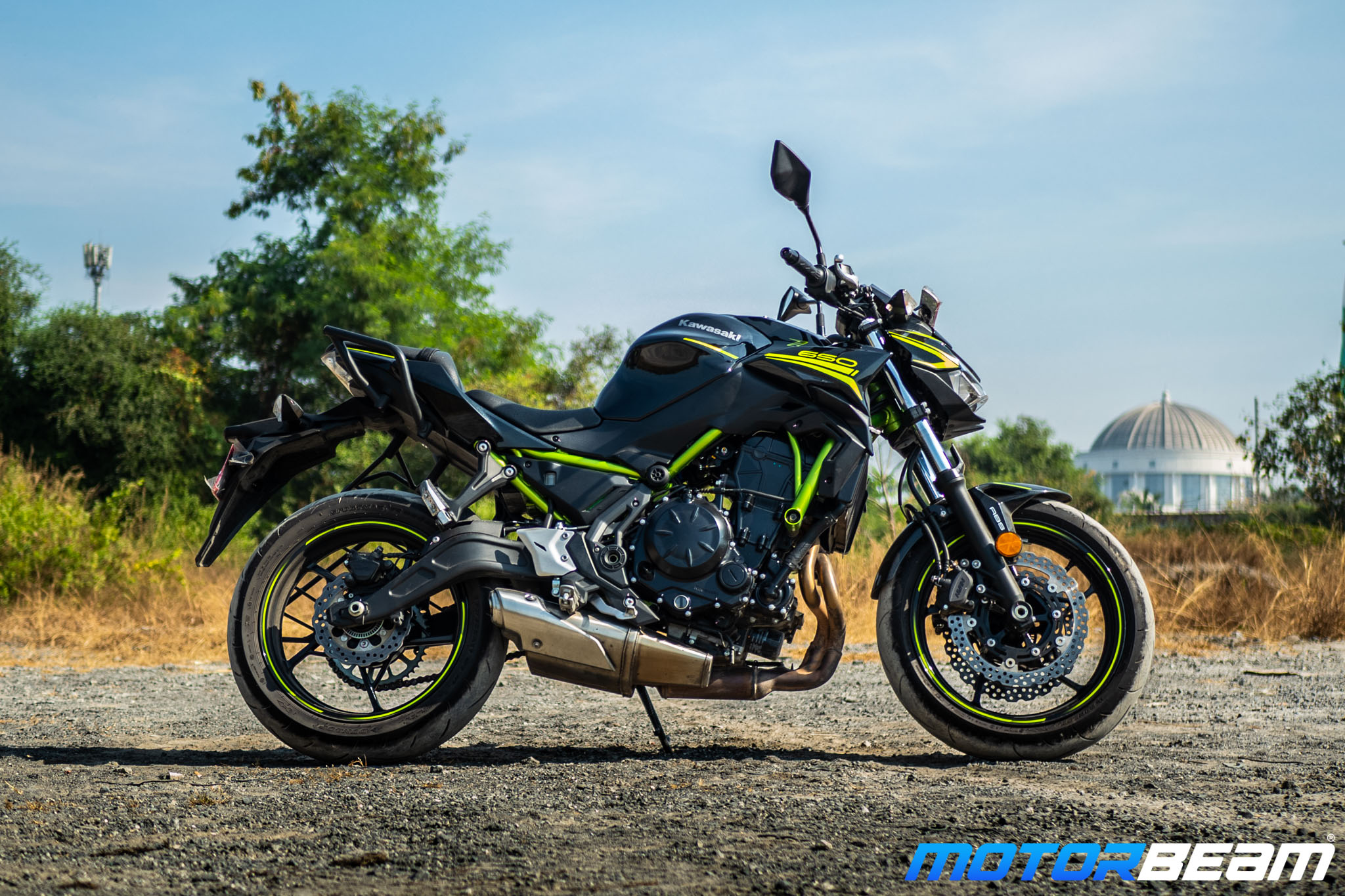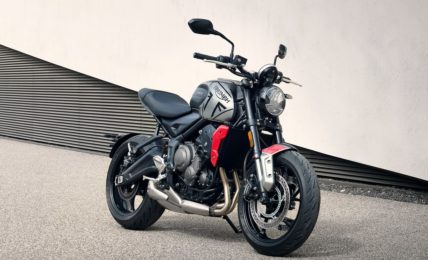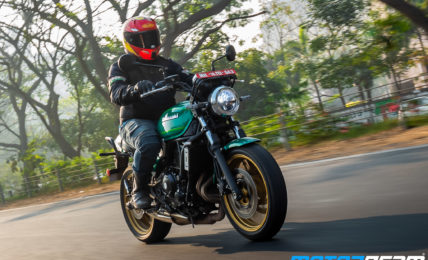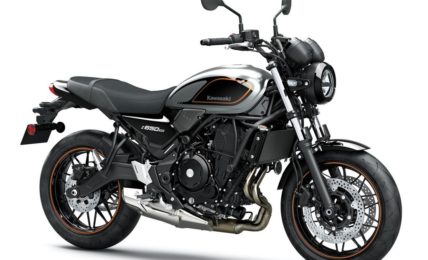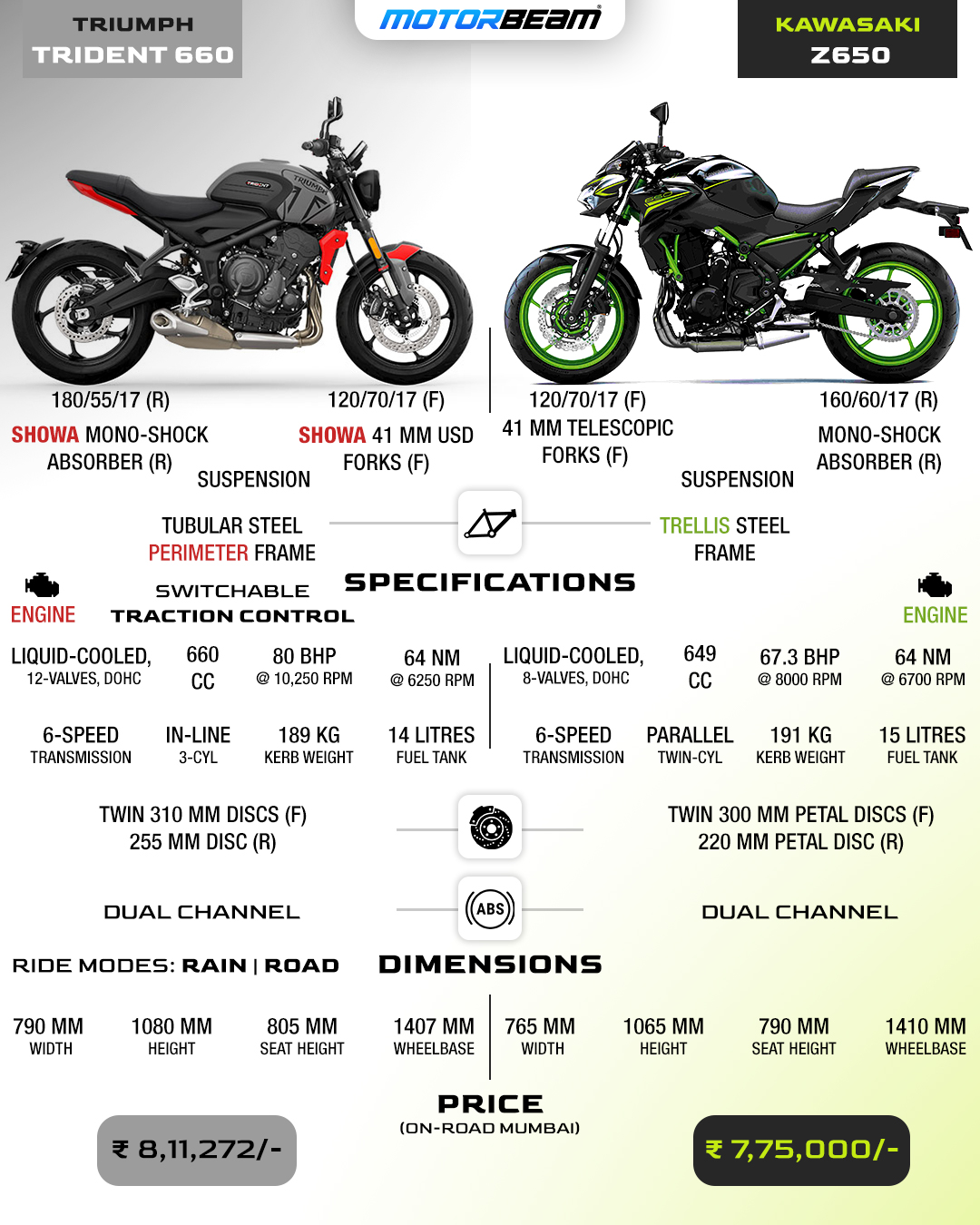
Triumph Trident 660 vs Kawasaki Z650
The middle-weight street naked segment has been quite popular lately, especially since the launch of the Trident. The Trident is the newest entrant in this segment. It is also the most affordable Triumph motorcycle money can buy. With the entry of the Trident, many buyers are confused between these two, so here we have a detailed spec comparison between the Trident and the Z650. The Trident has better equipment on offer, but the Z650 has earned its name and fame with time. Recently, Kawasaki launched the updated BS6 model of the Z650 in India. This update gave it a fresh face and a few hardware changes too. On the other hand, the Trident is an all-new product with a very distinctive minimalist design. Which one should you buy? We help you decide.
Triumph Trident 660 vs Kawasaki Z650 Design
Speaking about the Trident first. The entire design theme is very minimalistic. It doesn’t look as loud and energetic as the Z650 but, it has its own charm. The Trident possesses the old-retro design language with all the modern elements. It gets a circular LED headlamp, circular instrument cluster and an easy-looking tank. From the sides, you realise the compact dimensions of this bike. There are very few body panels and the bike beautifully ends before the wheel with a proper tail tidy. The eye-candy here is the 660cc triple-cylinder engine which is ornamented in ivory paint. The underbelly exhaust is finished in a bronze finish which looks premium. The taillight and grab rails are neatly integrated into the frame and the number plate is mounted on the rear mudguard. Overall, Triumph has aimed at creating a simple, one of a kind timeless street naked bike.
Looking at the Z650, it looks as fresh and full of zest as ever. The BS6 update has brought in a thorough visual update along with a few mechanical changes. The Z650 follows the Sugomy design language and fits in with its elder siblings. It demands a lot of presence and attention over the Trident, especially with the flashy lime green highlights. The Z650 looks much spacious and purpose-built than the Trident. However, like always, Kawasaki still continues with the piped grab rails and a barbecue grill like saree guard. These elements look like last moment additions and destroy the appeal of the bike. From the front, the headlight surely conveys the overall nature of this bike, angry and sharp. Though the indicators have an edgy design, they continue to be halogen which looks obsolete.
Triumph Trident 660 vs Kawasaki Z650 Features
Compared to the Z650, the Trident has a long feature list. For starters, it comes equipped with a bigger and better 41 mm Showa USD suspension setup, bigger 310 mm dual discs at the front and a larger 255 mm disc at the rear. Apart from this, it also gets all-LED lighting, a 180 section rear tyre, which is 20 mm wider than the Z650. Other than this, the Trident inches forward with its joystick switchgear. However, the instrument cluster looks quite plain in comparison to the Z650. Also, Triumph has equipped the Trident with two ride modes – road and rain. Not to forget, the traction control system. However, Bluetooth is an optional accessory on the Trident and once opted, you can control navigation, music controls, etc.
In terms of features, the Z650 feels a bit basic and dated. It gets a traditional telescopic suspension setup. Being a 160 section, the rear doesn’t inspire as much confidence. A touch of modernity here is the 4.3-inch TFT display which is crisp and offers better readability than the Trident. The Z650 gets a petal disc setup which is a neat touch. It also gets Bluetooth connectivity but, it doesn’t get many functions like navigation, music controls, etc. all it can do is display all the ride telemetry data and the last location of the bike. However, it doesn’t get any ride modes and a traction control system which is very shocking.
Triumph Trident 660 vs Kawasaki Z650 Ergonomics
Since both bikes are naked streetfighters, they have a similar ergonomic triangle. The Trident gets centre set footpegs and an easy-to-reach handlebar. This combination results in a comfortable, upright seating posture. However, only the brake lever is blessed with adjustability function. The mirrors are easily adjustable and are wide enough to offer a good view of what’s behind. Coming to suitability, the seat height is 805 mm and the bike has pretty compact dimensions. It best suited for people below 5’8″ as taller riders will feel cramped. Note that the pillion seat lacks comfort and space but it’s alright for short city trips.
The Z650 offers a similar riding posture as the Trident. Positioning of the centre-set footpegs and straight handlebar translates to a very comfortable posture and the 790 mm seat height makes the Z650 more friendly for shorter riders. It gets a split seat setup which works in favour of the rider but, the pillion comfort isn’t as much. Also, the rider’s seat has nice back support which makes it a tad better than the Trident. However, the rider’s seat feels a bit too softer than the Trident. The Z650 is also equipped with adjustable levers which is a thoughtful touch. Lastly, the mirrors offer a decent view of what’s behind but, they tend to vibrate on higher RPMs.
Triumph Trident 660 vs Kawasaki Z650 Performance
Propelling the Triumph is a 660cc triple-cylinder engine that produces 80 BHP at 10,250 RPM and 64 Nm of torque at 6250 RPM. Both motorcycles produce similar torque but, with its extra cylinder, the Trident gains 12.7 BHP. Speaking about the gearbox, it is a 6-speed unit but, a slipper clutch isn’t offered as standard. Nevertheless, the shifts are perfect and the gears slot in smoothly. Since the Trident has an extra cylinder, it is the better sounding motorcycle here. And with its ride modes, you can choose the right setup according to the conditions. The Trident gets a 14-litre fuel tank and returns about 22-23 km/l, giving you a tank range of 322 km.
The Z650 is powered by an inline-twin motor that produces 67.3 BHP at 8000 RPM and 64 Nm of torque at 6700 RPM. Though both bikes produce similar torque, the power difference is quite pronounced. The crisp gearbox of the Z650 is assisted by a slipper clutch which is a good touch. However, don’t expect this BS6 motor to be as active as its BS4 counterpart. This motor isn’t specifically smooth, you can feel the vibrations at all contact points as the revs start building. Lastly, the Z650 gets a bigger 15-litre fuel tank and with an average fuel economy of 22 km/l, your riding range lies at 300 km.
Triumph Trident 660 vs Kawasaki Z650 Handling
In terms of handling, the Trident is the better pick. The USD suspension offers excellent high-speed stability. And the tubular steel perimeter frame offers the perfect amount of flex. It tips into corners lovingly and the Michelin Road 5 tyres ensure that the bike holds its line throughout. While tacking the city, the Trident feels extremely lightweight. With its short 1401 mm wheelbase, the bike doesn’t hesitate to swerve between lanes. Braking duties are well managed by twin 310 mm discs up-front and a 255 mm rear disc backed by Nissin callipers. Though the brakes pack stupendous stopping power, the rear has a tendency to jitter around under heavy load.
The Z650 still continues with adjustable telescopic forks up-front which are good for handling bad roads but, do not offer the best stability and feedback. It also continues with the tried and tested steel trellis frame which offers decent flex and feedback. The Z650 feels very nimble and light to ride in the city. Though it does a better job at handling bad roads, it doesn’t feel at home on the highway. The front end feels quite direct and connected but, the Dunlop Sportmax Roadsport 2 don’t enjoy being pushed to the limits. The braking setup at the front consists of twin 300 mm petal discs and a rather small 220 mm rear petal disc. This setup does a good job of stopping the bike but, the ABS is too intrusive for our liking.
Triumph Trident 660 vs Kawasaki Z650 Verdict
The Trident is dearer than the Z650 by Rs 36,272/- and considering the price and hardware that the Trident offers, it seems to be the better deal here. The Trident is extremely alluring but the Z650 has its own cards. If you want a minimalist, neo-retro street bike with modern equipment, you are better off with the Trident. But, if you want a straight, no-nonsense bike and for you, nothing is better than a good-old Japanese bike that will happily outlast you, then you should get the Z650.

